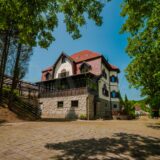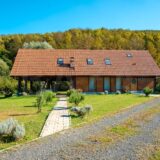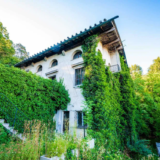Slow design is a design philosophy that emphasizes sustainability, thoughtfulness, quality, and a connection with nature and human values. This approach to design emerged in response to the faster pace of life and consumer culture, striving to create spaces that encourage a slower, more thoughtful lifestyle. It combines aesthetics, functionality, and ecology while promoting harmonious coexistence between people and nature.
The Emergence of Slow Design
The concept began developing at the beginning of the 21st century as a response to the faster pace of life and mass production, which prioritized quantity over quality. In contrast to the fast and reckless approach to design and consumption, slow design represents a thoughtful alternative that focuses on quality, sustainability, and respect for nature and local communities.
Durability
Slow design advocates for sustainable design, considering environmental and social aspects. It employs natural and renewable materials, minimises waste, emphasises energy efficiency, and promotes the long-term use of products.
Thoughtfulness and Perfection
This approach strives for thoughtful and sophisticated design based on a deep consideration of user needs and environmental impacts. Products and spaces are designed to meet functional and aesthetic needs while promoting a high-quality user experience.
Cooperation and the Local Community
Slow design encourages collaboration among designers, artisans, and users. It emphasizes connections with local communities and traditional craft techniques that preserve cultural identity and heritage.
Ethics and Aesthetics
It incorporates ethics and aesthetics, creating spaces and products that are visually appealing, functional, and simultaneously respectful of the environment and human values.
Using Slow Design
Slow design can be applied across various design fields, including interior design, architecture, product design, gardens, and sustainable urban planning. When employing slow design principles, it is crucial to consider sustainability, thoughtfulness, cooperation, and ethics, striving to create spaces and products that reflect harmony between humans and nature.
In interior design, slow design may involve selecting natural and sustainable materials, collaborating with local artisans, and adapting spaces to meet users’ needs and lifestyles. In architecture, slow design manifests as an approach to sustainable urban planning, encompassing green spaces, sustainable construction, and the promotion of community life.
With an increased awareness of the importance of sustainability and environmental responsibility, slow design brings value and meaning to the world of design. Its goal is to create spaces and products that endure while expressing beauty and harmony with their environment and users.”






